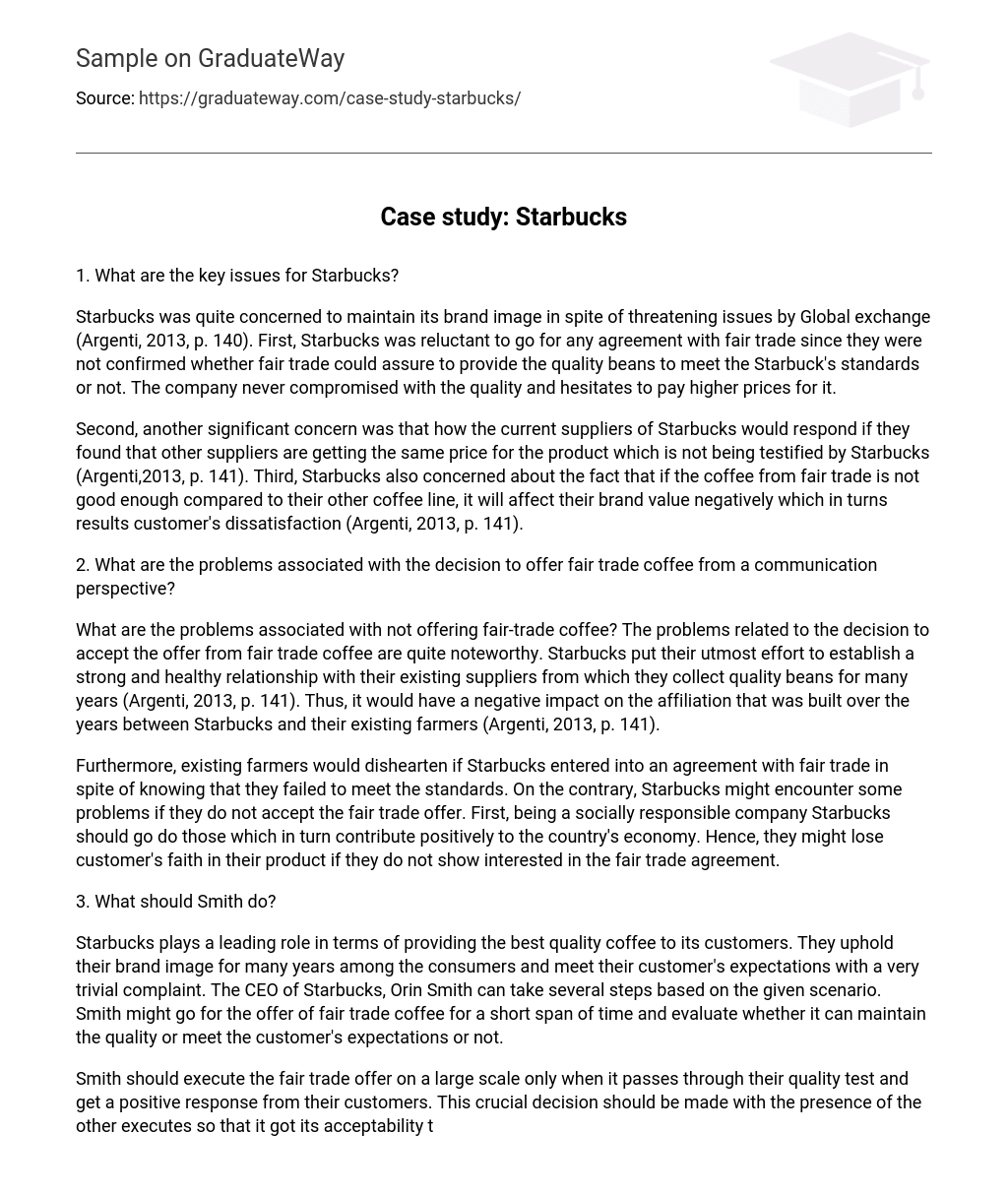1. What are the key issues for Starbucks?
Starbucks was quite concerned to maintain its brand image in spite of threatening issues by Global exchange (Argenti, 2013, p. 140). First, Starbucks was reluctant to go for any agreement with fair trade since they were not confirmed whether fair trade could assure to provide the quality beans to meet the Starbuck’s standards or not. The company never compromised with the quality and hesitates to pay higher prices for it.
Second, another significant concern was that how the current suppliers of Starbucks would respond if they found that other suppliers are getting the same price for the product which is not being testified by Starbucks (Argenti,2013, p. 141). Third, Starbucks also concerned about the fact that if the coffee from fair trade is not good enough compared to their other coffee line, it will affect their brand value negatively which in turns results customer’s dissatisfaction (Argenti, 2013, p. 141).
2. What are the problems associated with the decision to offer fair trade coffee from a communication perspective?
What are the problems associated with not offering fair-trade coffee? The problems related to the decision to accept the offer from fair trade coffee are quite noteworthy. Starbucks put their utmost effort to establish a strong and healthy relationship with their existing suppliers from which they collect quality beans for many years (Argenti, 2013, p. 141). Thus, it would have a negative impact on the affiliation that was built over the years between Starbucks and their existing farmers (Argenti, 2013, p. 141).
Furthermore, existing farmers would dishearten if Starbucks entered into an agreement with fair trade in spite of knowing that they failed to meet the standards. On the contrary, Starbucks might encounter some problems if they do not accept the fair trade offer. First, being a socially responsible company Starbucks should go do those which in turn contribute positively to the country’s economy. Hence, they might lose customer’s faith in their product if they do not show interested in the fair trade agreement.
3. What should Smith do?
Starbucks plays a leading role in terms of providing the best quality coffee to its customers. They uphold their brand image for many years among the consumers and meet their customer’s expectations with a very trivial complaint. The CEO of Starbucks, Orin Smith can take several steps based on the given scenario. Smith might go for the offer of fair trade coffee for a short span of time and evaluate whether it can maintain the quality or meet the customer’s expectations or not.
Smith should execute the fair trade offer on a large scale only when it passes through their quality test and get a positive response from their customers. This crucial decision should be made with the presence of the other executes so that it got its acceptability to everyone (Argenti, 2013, p. 144).





